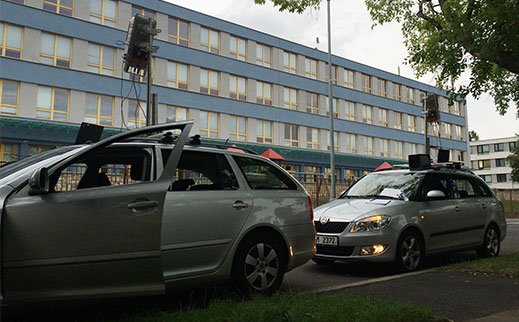Thor’s Legendary Hammer - Imitated by Engineer Allen Pan
Thor’s legendary hammer Mjolnir, in marvel comics is popular for being used only by the worthy. Mjolnir cannot be lifted off the ground and it is this property which electrical engineer Allen Pan, decided to imitate on a `working’ Mjolnir.
To make the hammer immoveable he thought that strong magnets seemed to be the best option and inside the Mjolnir he filled a microwave oven transformer electromagnet that utilised electricity to produce a magnetic field. This produced a strong magnetic pull which was strong enough for the hammer that when placed on a metal surfacecannot be lifted like the locked manhole cover and felt too heavy to be lifted.
The handle is linked to a capacitive touch sensor which is in turn attached to an Arduino Pro Mini and a solid state relay that acts as a switching device. When someone tends to grasp the handle, the electromagnets get switched on attaching the hammer to the metal surface. But the hammer could be turned off through a fingerprint sensor keyed to Pan’s thumbprint and when he grasps the hammer, the magnets switches on. When he tends to move his thumb across the sensor, it switches off again enabling Pan to lift the hammer.
Challenged Unsuspecting Passer-By
Taking his invention to the streets of Venice Beach California, Pan challenged unsuspecting passer-by to lift it and it seems to be a brilliant prank like the ones in comics and in films. A video of Pan urging people to try and lift the hammer, in California, has been shared millions of times.
Pan seemed to come up with this idea after observing a trailer for the latest Avengers movie, the series which promoted the Norse god of thunder. In a certain scene there are all superheroes who seem to be hanging out and are trying to lift Thor’s hammer which traditionally can be lifted only by someone who is worthy – that being Thor.
Pan tells that `Tony Stark, who is sort of the engineer genius of the group, throws a theory that it’s printed and you need your thumbprint’. Hence he decided that there could be a technological solution to this magical object.
The Hoax - Thumbprint Sensor
Pan purchased a Halloween costume version of Thor’s hammer online and filled it with the electronic guts. Towards the bottom of the hammer, was a large electromagnet which gets activated when anyone tries a hand on the handle. For the hammer to operate, it needs to be on a metal surface.
The hoax is the thumbprint sensor which only recognizes Pan’s prints and when he puts his hand on the handle, the electromagnet tends to get deactivated. After developing it, he took the hammer to Venice Beach in order to test it and his innovative plan was to locate monstrous, gigantic mutant men at Muscle Beach, which was the infamous public workout space.
However being the middle of a weekday, he was unable to find anyone. He finally ended in employing people on the boardwalk to test it. Initially, there seemed to be some hesitation since people were apprehensive that the hammer would shock them.
He mentioned that when they were capable of getting few people to try the same, they were able to gather a small crowd with lot of great attempts. Ultimately, some people reckoned out how the hammer worked.







